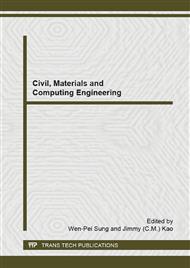p.946
p.950
p.954
p.958
p.963
p.971
p.975
p.980
p.984
Development and Application of Flexible Pressure Sensor Pad
Abstract:
With the gradual rise inthe proportion of the aging population, the world has entered the agingsociety. Thus, the assessments of service to care receivers and home sleepquality have attracted more emphasis and attention of the medical sector. Theactuation principle is to apply a load on the upper sensor film, which touchesan external electronic control device to form the micro-current conduction.Thus the movement information of care receivers getting into or out of bed areprovided, and then through the device itself or emergency call device of thenursing station, warnings to the care receiver and other functions are given.This research aimed to understand the relationships of positive load, andrepeated load of the sensor pad to resistance; and at the last course of theexperiment, SEM and AFM were used to observe the change of oil ink organizationon the surface of the sensor film before and after the experiment as anamendment parameter for subsequent designs of the sensor pad. Future researchdirections for the flexible pressure sensor pad can be aimed at detecting bodypressure distribution, assessment of sleep quality, and so on.
Info:
Periodical:
Pages:
963-970
Citation:
Online since:
December 2014
Authors:
Keywords:
Price:
Сopyright:
© 2015 Trans Tech Publications Ltd. All Rights Reserved
Share:
Citation:


